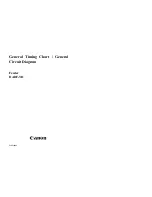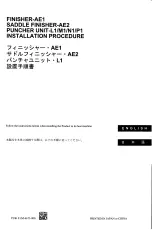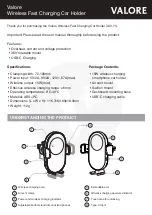
14
Specifications
2.3 General principle of operation
Optical sensing of oxygen originates from the work of Kautsky in 1939 where he demonstrated
that oxygen can dynamically quench the fluorescence of an indicator (decrease the quantum
yield). This principle has been reported in various fields of application such as monitoring
aquatic biology in waste water, tests for blood gas analysis and cell culture monitoring. The
method is now recognized by ASTM (American Society for Testing and Materials) for the
measurement of oxygen in water. Compared to classical oxygen detection using
electrochemical sensors, luminescent technology offers several advantages such as no oxygen
consumption, independence from sample flow velocity, no electrolyte and low maintenance.
Optical sensing of oxygen is based on the measurement of the red fluorescence of a
dye/indicator illuminated with a blue light as shown in
The dye fluorescence is quenched by the presence of oxygen. The oxygen concentration can
be calculated by measuring the decay time of the fluorescence intensity as shown by
left. The higher the oxygen concentration is, the shorter the decay time will be. By modulating
the excitation, the decay time is transformed into a phase-shift of the modulated fluorescence
signal, which is independent of fluorescent intensity and thus of potential aging (
right).
Figure 1 Principle of optical oxygen detection using fluorescent dye
Figure 2 Fluorescence decay time (left) and modulated signals (right)
Summary of Contents for ORBISPHERE K-M1100
Page 5: ...4 Table of Contents ...
Page 19: ...18 Specifications ...
Page 39: ...38 Installation ...
Page 45: ...44 User Interface ...
Page 48: ...47 Section 6 View Menu Figure 33 View menu ...
Page 51: ...50 View Menu ...
Page 52: ...51 Section 7 Measurement Menu Figure 36 Measurement menu ...
Page 59: ...58 Measurement Menu ...
Page 65: ...64 Calibration Menu ...
Page 66: ...65 Section 9 Inputs Outputs Menu Figure 39 Inputs Outputs menu ...
Page 68: ...67 Inputs Outputs Menu 9 4 Analog outputs Figure 40 Analog outputs menu ...
Page 75: ...74 Inputs Outputs Menu ...
Page 91: ...90 Communication Menu ...
Page 94: ...93 Section 12 Products Menu Figure 43 Products menu ...
Page 97: ...96 Global Configuration Menu ...
Page 98: ...97 Section 14 Services Menu Figure 45 Services menu part 1 ...
Page 99: ...98 Services Menu Figure 46 Services menu part 2 ...
Page 107: ...106 Maintenance and Troubleshooting ...
Page 113: ...112 Accessories and Spare Parts ...
















































